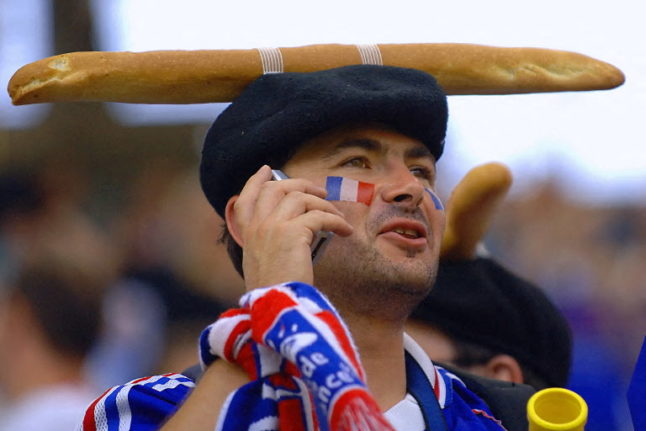There are many official and unofficial names by which you can name people according to which part of France they are from.
City-dwellers in places like Paris may sometimes condescendingly refer to people elsewhere in the country as a blédard (which roughly translates as ‘hillbilly’) or de province (someone from the provinces), but in reality, there are far better descriptors than that.
Here is our regional breakdown of names you can give to people, depending on where they are from.
Auvergne-Rhône-Alpes
You can describe people from the Auvergne-Rhône-Alpes region as Auvergnats, Rhônalpins or Aurhalpins.
People who live in Lyon, the biggest city in the region are officially referred to as Lyonnais, but people from there are also known as gones (mostly for boys, young men and football fanatics) and fenottes (for young women and girls). These nicknames come from the region’s franco-provençal language, which is otherwise more or less forgotten.
People from the département of Savoie, which also sits in the region are known as savoyards.
READ MORE: QUIZ: How many French cities can you identify by their nicknames?
Bourgogne-Franche-Comté
People from the Bourgogne-Franche-Comté region of France are known as Bourguignons and Francs-Comtois.
Inhabitants of the city of Dijon, the largest in Bourgogne-Franche-Comté, are known as Dijonnais.
Brittany
People from Bretagne (Brittany) are known as Bretons.
Official denominations for people living in major towns in Brittany are as follows: brestois (Brest), lorientais (Lorient), nantais (Nantes), rennais (Rennes), malouin (Saint-Malo).
But Brittany has an exceptionally large array of strange nicknames for residents of smaller towns and villages – some of which derive from local languages.
People from Malestroit for example are known as les sabots (the clogs); people from Béganne are known as les fesses naï (the witches); residents of Rochefort-en-Terre are known as les coucous (the cuckoos); and those unlucky enough to live in Roc-Saint-André are known as les chats-de-boué (the muddy cats).
Centre-Val de Loire
Residents of the Centre-Val de Loire region are officially known as Centro-ligériens. Informally, they sometimes mockingly referred to as les dormeurs du Val (‘the sleepers of the valley’) – suggesting that they live in somewhat of a backwater.
Residents of the major cities in the region are known as follows: orléanais (Orleans), chartrains (Chartres) and tourangeaux (Tours).
Corsica
Residents of Corsica are referred to as Corses.
The people of Corsica use the word pinzutu to describe residents of mainland France. Pinzutu means ‘pointed’ in the Corse language and is a reference to the pointed tricorne hats worn by French soldiers who invaded the island in the 18th Century.
Grand Est
People from the Grand Est region of France are known by different words depending on where exactly in the region they are from. Les alsaciens come from Alsace, les champenois or les champardennais come from Champagne, les ardennais come from the Ardennes, and les lorrains come from Lorraine.
The region has some fun nicknames for residents of smaller villages, such as les nawelspàalter (‘the fog cleavers’) those living in Griesbach-au-Val and les escargots for those living in Michelbach-le-Bas.
The largest city in the Grand Est region is Strasbourg, where residents are officially known as strasbourgeois.
Hauts-de-France
The Hauts-de-France region is located in the north of the country and while there is no official label to describe people from this area, many use the unofficial tag, les ch’tis. Those living in what used to be known as the region of Picardy (which fused with Nord-Pas-de-Calais in 1972 to create the Hauts-de-France region) are known as picards.
Villages in this part of France has a strong tradition of using insulting labels to describe the residents of neighbouring villages. To name just a few: ches péteux d’Arleux (the farters of Arleux); les fiers culs d’Bersée (the proud arses of Bersée); les pourchots d’Orchies (‘the pigs of Orchies’); les léqueux d’plats (‘the plate lickers of Pas en Artois’).
Île-de-France
Residents of the Île-de-France region are known as franciliens.
At the heart of this region is Paris, where residents are known officially as parisiens and informally as parigots.
Some people from elsewhere in the country will insultingly refer to Parisians as têtes de veau (‘veal heads’) because it rhymes with parigot. Others will use the insult têtes de chien (‘dog heads’) because it rhymes with parisien.
A rarer nickname for Parisians is panamistes which comes from the word Paname – a slang term for Paris.
Normandy
Residents of Normandy are known as normands while residents of its largest city, Rouen, are known as rouennais.
People from the Calvados département are known as calvadosiens; people from the Seine-Maritime département as seinomarins; people from the Manche département as manchois or manchots; people from the Eure département as eurois; and people from the Orne département as ornais.
READ MORE: Snobs, beaches and drunks – 5 things this joke map teaches us about France
Nouvelle-Aquitaine
Nouvelle-Aquitaine is the largest region of France and its residents are officially known as néo-aquitains.
Its largest city is Bordeaux, where residents are officially known as bordelais. But sometimes, the bordelais are insultingly known as doryphores in reference to a kind of beetle that arrived to Europe from the United States and ravaged potato crops in the 19th and 20th Century. Sometimes, people in Paris and Marseille are also called doryphores.
In the countryside of Nouvelle-Aquitaine, people often use the term doryphores to describe wealthy city-dwellers who buy up property and disturb the balance of the countryside.
Occitane
Residents of the Occitane region are sometimes referred to as occitans, but this is not an official label.
Major cities include Toulouse where residents are known as toulousains and Montpelier where residents are known as montpelliérains.
In the Occitan language, there are loads of smaller villages where residents are mockingly referred to with silly names. In the Hérault département alone for example, there are: the capbours (‘stupid heads’ – used to talk about residents of Saint Vincent de Barbayragues); sauta rigolas (‘the funny jumpers’ – residents of Mauguio); lous bentotis (‘braggarts’ – residents of Saint Paul et Valmalle); and manja favas (‘the bean eaters’ – residents of Fontes).
Pays de la Loire
Residents of the Pays de la Loire region are sometimes called ligériens – especially those living in the département of La Loire. Sometimes people also use the term loirains.
Its biggest city is Nantes, where residents are referred to as nantais.
People from the Maine-et-Loire département are sometimes called angevins; residents of the Mayenne département are known as mayennais; those from Sarthe are known as sarthois; while those from Vendée are known as vendéen.
Provence-Alpes-Côte d’Azur
People from the Provence-Alpes-Côte d’Azur region are known as provençaux – a term not to be confused with de province, which is used to talk about people from anywhere in provincial France.
It’s major city is Marseille, where residents are known as marseillais.
Do you know any other nicknames for locals in France? Let us know in the comments below.



 Please whitelist us to continue reading.
Please whitelist us to continue reading.
Hello
We stay in Les Epesses (Vendee) and the locals there are know as Spiceens.
Our locals are known as Les Grand Bourgeois. Le Grand Bourg 23240. Not many bourgeois. and not many grand, but enough to make the idea stick!